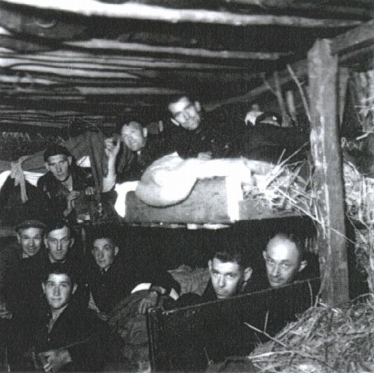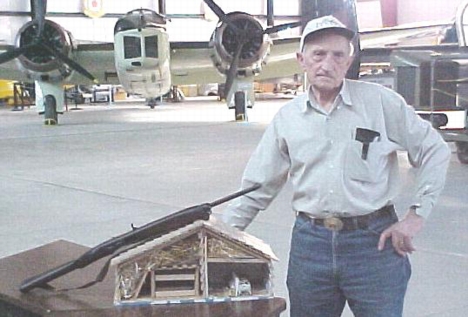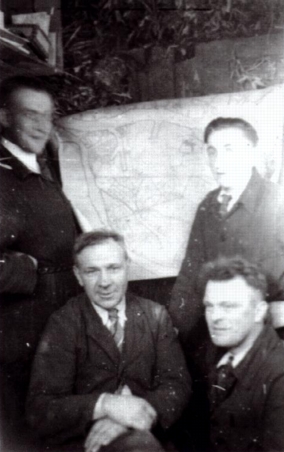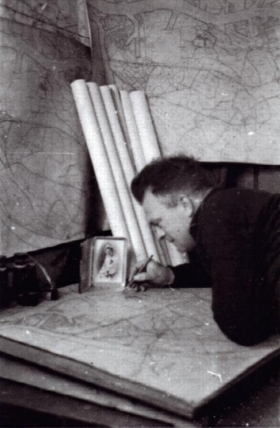 Museum
Museum  |
Bomber Command
|
Aircrew Chronicles
|
Aircrew Losses
|
Nose Art
|
BCATP
|
Lancaster
|
Media
|
Bomber Command
|
Aircrew Chronicles
|
Aircrew Losses
|
Nose Art
|
BCATP
|
Lancaster
|
Media
 Museum
Museum  |
Bomber Command
|
Aircrew Chronicles
|
Aircrew Losses
|
Nose Art
|
BCATP
|
Lancaster
|
Media
|
Bomber Command
|
Aircrew Chronicles
|
Aircrew Losses
|
Nose Art
|
BCATP
|
Lancaster
|
Media
Bomber Command Museum Chronicles
|
From May, 1940 when the German army invaded until the spring of 1945 when the country was liberated by the Canadian army the Netherlands was occupied by the German armed forces. During this time the Dutch Resistance organized and carried out armed attacks on the enemy, engaged in sabotage operations, acquired intelligence regarding enemy operations and radioed it to England, gave shelter to people in hiding (members of the Jewish faith were, of course, especially in need of assistance), printed and distributed illegal newspapers, produced false stamps, identity cards, etc., and assisted members of the Allied air forces who crash-landed or parachuted into occupied Holland. |
|
Bomber Command played an important role, supplying the Dutch Resistance, as well as similar groups in France, with weapons and other necessary materials and equipment. Flying at low level to a pre-arranged rendezvous location, the aircrew would strain to see signals from hand-held lights on the ground and then drop their loads by parachute. Those on the ground would have little time to gather the supplies and hide them. Capture by the enemy meant facing the Nazi SS branch and in all likelihood torture and death.
Ron Groenveld and his family had watched the bombing of Rotterdam by the Luftwaffa and had witnessed the occupying Nazi's in action. He recalled, "You see so many things happening...You just had to do something about it." Ron was only sixteen years old when the war began but, together with his father, brother, and other members of the Resistance, played a significant role in the successes of the Dutch Resistance.
 DUTCH RESISTANCE MEMBERS IN THE HIDE OUT Back (l-r): ? ; Wim Byl; Jo van Hilten Middle: Teun Groeneveld (Ron's father); Jaap Meyer (Resistance leader); Ron Groeneveld Front: Dingeman Groeneveld (Ron's brother); Leen Berbwerf; Teun Rozendaal |
The Groeneveld family farm was located near Pernis, south of Rotterdam, and included a cow barn. Seventy feet long and forty feet wide, the barn was divided into two halves, one where the cows spent the nights and the other that held hay. During the winter of 1942-43, Ron, his father, and brother built the hideout in the centre of the hay with no part of it near the walls of the barn. Access was from the part of the barn where the cows were kept. The hideout existed as a refuge for operating members of the Resistance, a place that they could go to if necessary and know that they would be safe for a few days. It was never used to hide others in danger or Allied aircrew who were seeking help. To do so would have increased the likelihood of the hideout's eventual discovery and placed the Resistance fighters in mortal danger. Enemy soldiers appeared at the farm regularly, once taking a careful look at the hay barn and poking bayonets into the hay on all sides and from above the hideout. |
|
In early 1943 the family awoke to find a horse and wagon in front of their house. No people were to be seen. The wagon was loaded with rifles, bren guns, bazookas, and ammunition -enough armament to supply 25 men. The guns and ammunition had been dropped by Bomber Command and brought to the hideout by other members of the Resistance unknown to the Groenvelds. The weapons were stored in the hideout and used regularly by Resistance members in the area until the end of the war. Ron was also hiding out during the last 2 1/2 years of the war. The enemy was rounding up all the young men and forcing them to work in factories in Nazi occupied Europe. So for over two years Ron spent every night in the hideout. During the days he worked on the farm but if the enemy appeared he would disappear into the hideout. Once when he couldn't reach the barn in time he ran off into the fields and was shot at by Nazi soldiers. Ron emigrated to Canada in 1954 and farmed near Blackie, Alberta before retiring to High River. The .30 calibre carbine on display at the Nanton Lancaster Society Air Museum was part of the armaments dropped by Bomber Command, stored in the hideout, and used by the Resistance. It was to have been turned in but Ron Groeneveld kept it instead.  Ron Groeneveld with the carbine and model of the family barn that he donated to the museum. |
 THE GROENEVELD FAMILY AND MEMBERS OF THE RESISTANCE IN THE HIDE OUT Gerrit van Wyk; Ron Groeneveld Front: Teun Groeneveld (Ron's father); Wim Byl |
|
After the Netherlands was occupied by the Nazis in May, 1940, Wim Byl worked at the Rotterdam airport that was of course controlled by "Wall Haven" (the enemy). He was hated by most of his friends and countrymen, thought to be a traitor for cooperating with the enemy. But Wim was no traitor. In a perfect location for monitoring enemy activity, he was gathering intelligence information and passing it on to other members of the Resistance to be radioed to England. In January, 1943 his activities were discovered by the enemy but before he could be captured (and in all probability shot) he moved into the hideout on the Groeneveld Farm. He lived there for 2 1/2 years, spending all his days and nights in the barn except one. When he arrived at the hideout his wife was pregnant. One day shortly after his daughter was born, Wim was hidden in a wooden coal box and transported to his house by horse and wagon where he had a brief visit with his wife and new baby. Although out of sight at all times, Wim continued to contribute to the efforts of the Dutch Resistance. He drew, by hand, detailed maps of the area in which the Resistance members who used the hideout operated. Every day for 2 1/2 years he laboriously kept them up to date after receiving information from Resistance members. In this way he kept track of enemy military units and anti-aircraft gun and searchlight locations. The maps and information were regularly transferred to other members of the Resistance who forwarded the valuable data to England by radio. Ron Groeneveld, who shared the hideout with Wim for 2 1/2 years, recalled that Wim was so grateful to the Groeneveld family that when the war was over he vowed to visit them once a week forever. He did so, never missing a week, until 1985 when Ron's mother passed away. |
 Wim Byl and his maps |